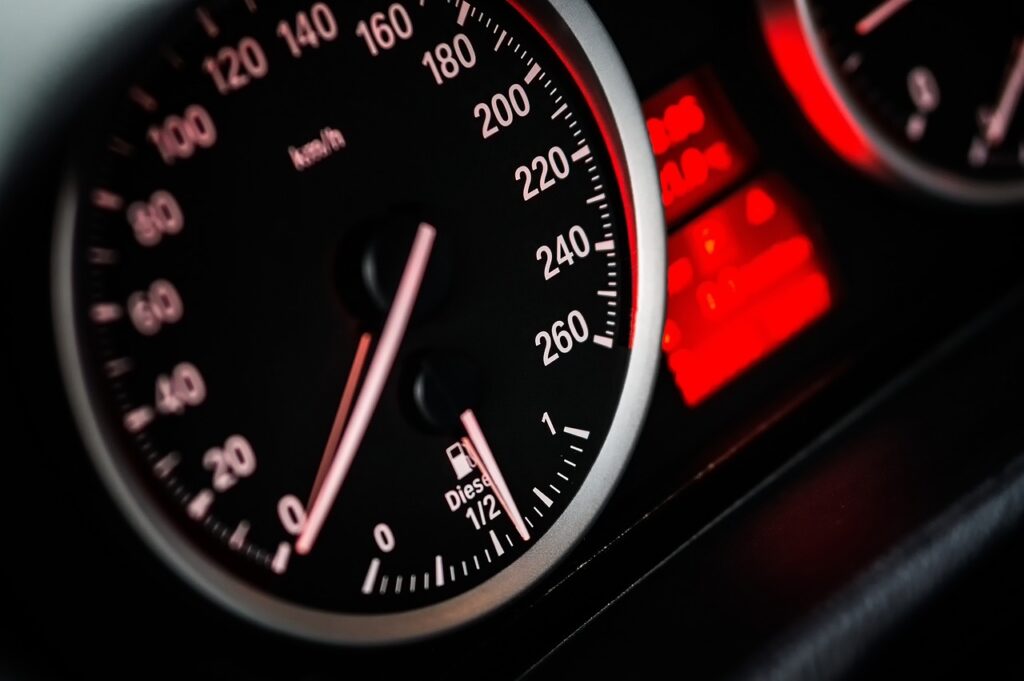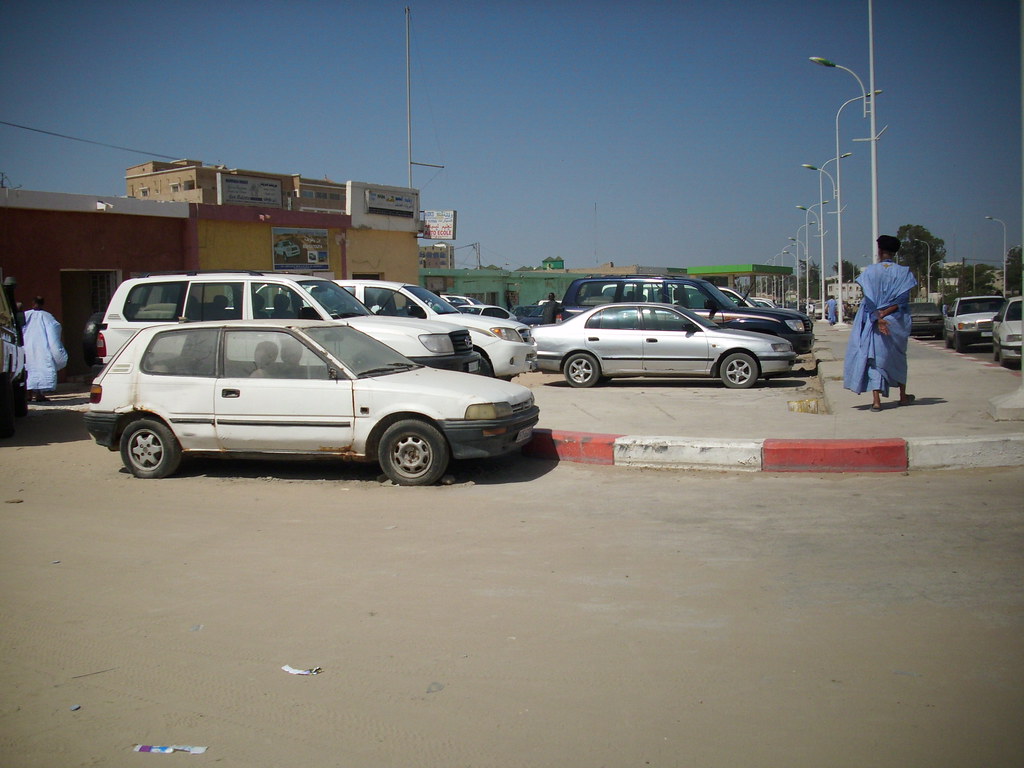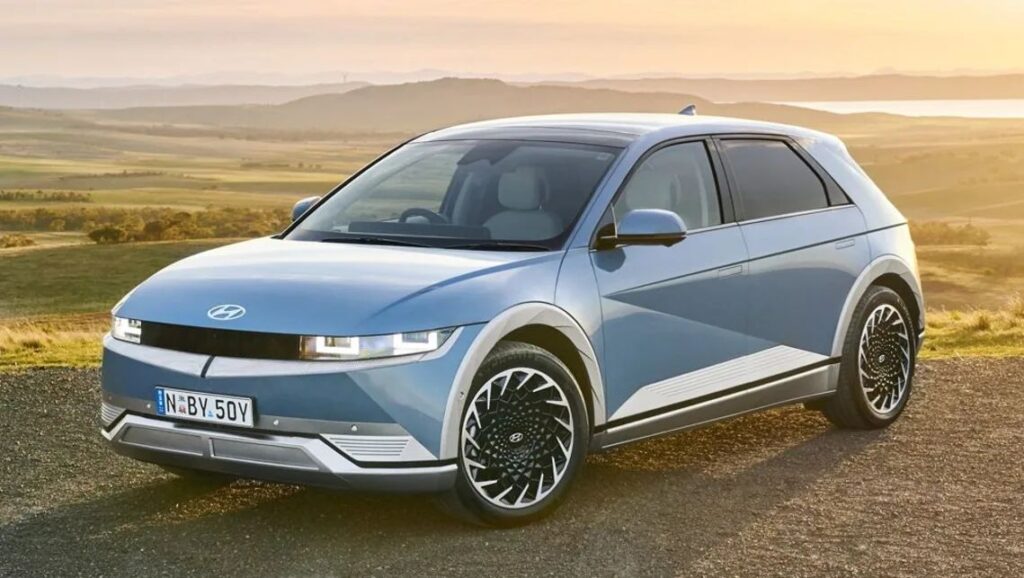
The automotive world is undergoing a seismic shift, with electric vehicles (EVs) leading the charge towards a greener, more sustainable future. Touted for their zero emissions, often lower running costs, and whisper-quiet operation, EVs are rapidly becoming the vehicle of choice for a growing number of consumers. Indeed, EV sales have seen a significant surge, hitting 22% of global new car purchases in 2024, a notable jump from 18% in 2023, signaling a clear trend towards widespread adoption.
Yet, beneath the sleek designs and impressive performance statistics, a peculiar and unsettling drawback has begun to emerge, casting a shadow over the otherwise bright promise of electric mobility: an unexpected increase in motion sickness among drivers and, more acutely, passengers. This isn’t just anecdotal chatter on social media platforms like TikTok; it’s a phenomenon garnering serious attention from experts and researchers alike, prompting both scientific investigation and a flurry of online discussions from would-be EV buyers wondering why silent, eco-friendly rides are leaving them feeling green around the gills.
So, what exactly is happening under the hood – or more accurately, within the sophisticated electronic systems – of these cutting-edge machines that’s causing such widespread discomfort? As we delve deeper, we’ll unpack the various technological and physiological factors at play, from innovative braking systems to the very absence of familiar sensory cues, all contributing to a “sickening new environment” that demands our analytical and investigative gaze. It’s a critical examination of how innovation, while beneficial, can sometimes introduce unforeseen human challenges.

1. **The Rise of EV Motion Sickness: A Neurological Mismatch**At its heart, motion sickness is a complex physiological response, not entirely understood, but widely believed to stem from a sensory delay or conflict within the brain. As Dr. Monya De, a physician in Los Angeles, explains, it occurs when there’s a discrepancy between what your eyes see, what your inner ear senses, and what your brain and body are registering. This disconnect creates a state of confusion, manifesting in uncomfortable symptoms such as nausea, dizziness, vomiting, and sweating, as elaborated by Dr. Brynna Connor, a board-certified family medicine physician.
For electric vehicles, this fundamental mechanism of motion sickness appears to be amplified by their unique operating characteristics. William Emond, a PhD student studying car sickness in France, attributes greater sickness in EVs to a “lack of previous experience.” Our brains, he notes, build expectations based on past rides in traditional gas-powered cars, relying on familiar cues like engine revs or torque signals to help anticipate motion. In EVs, these crucial clues are largely absent, creating what Emond terms a “neural mismatch.”
Dr. D.J. Verret, an ear, nose and throat doctor in Texas, further elaborates on this point, explaining that the brain sets up a model for what it expects in certain situations. In combustion cars, for instance, you hear the engine revving and instinctively know someone is stepping on the accelerator, leading to the car moving forward. In an EV, however, the auditory and visual inputs simply “don’t fit the model that you are actually moving,” leading to profound disorientation. This inherent mismatch between sensory inputs and the brain’s established predictive models is a primary reason why even those who have never gotten car sick may find themselves feeling less than stellar in an EV.
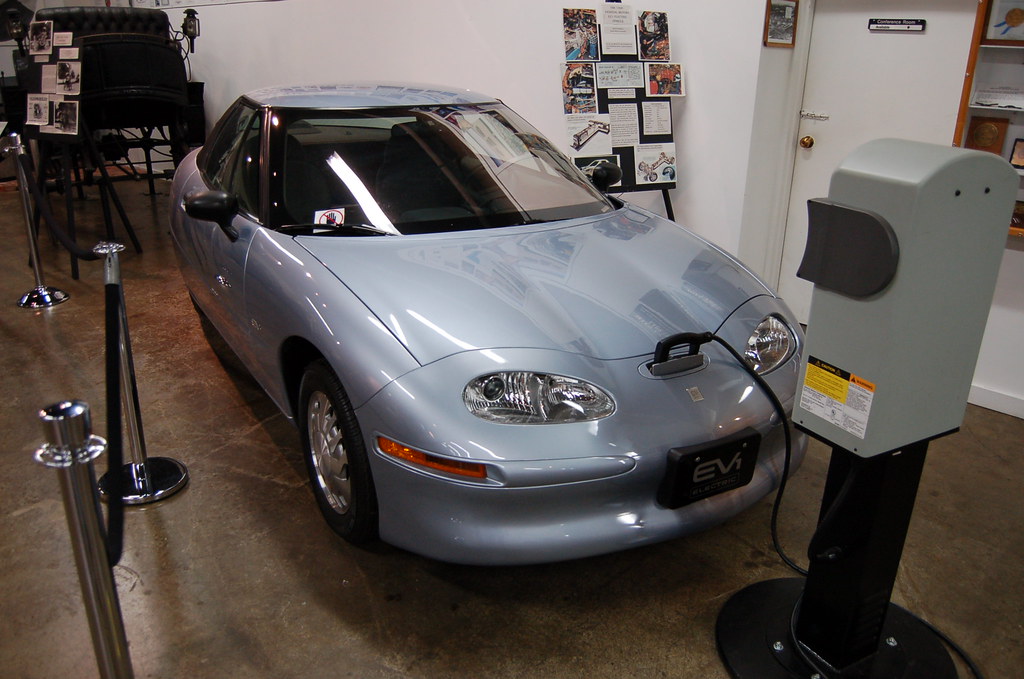
2. **Regenerative Braking: The Jerky Heart of the Problem**One of the most frequently cited culprits for EV-induced motion sickness is the innovative feature known as one-pedal driving, which leverages regenerative braking. This system allows drivers to slow down a vehicle merely by lifting off the throttle, converting the car’s kinetic energy into electricity that is then stored back in the battery. While highly efficient and a key advantage for extending range, its implementation can be a significant source of discomfort for occupants.
Experts highlight that the strong regenerative braking, designed to recapture maximum energy, can cause abrupt and jerky movements. Ed Kim, president and chief analyst of AutoPacific, specifically points to Teslas as the “worst offenders” in this regard, noting they can be “very jerky and really abrupt.” He adds that this forceful deceleration can lead to an “abrupt seesaw motion for passengers” if the throttle is not applied with extreme care. John Voelcker, a former editor of Green Car Reports, has personally experienced this, recalling feeling queasy twice in the back seat of a Tesla where drivers didn’t know how to modulate the strong regen braking, causing him to be “thrown around a little bit.”
The issue extends beyond just the abruptness; the very nature of these decelerations is problematic. As one study published in the International Journal of Human–Computer Interaction noted, the decelerations induced by regenerative braking are usually low frequency, a type of motion force that is “typical of a sickness-inducing motion.” Research conducted by Monica Jones, an associate research scientist at the University of Michigan Transportation Research Institute, further supports this, demonstrating that participants were “very sensitive to the jerk” associated with regenerative braking, with motion sickness ratings increasing significantly with higher magnitudes of longitudinal jerk.
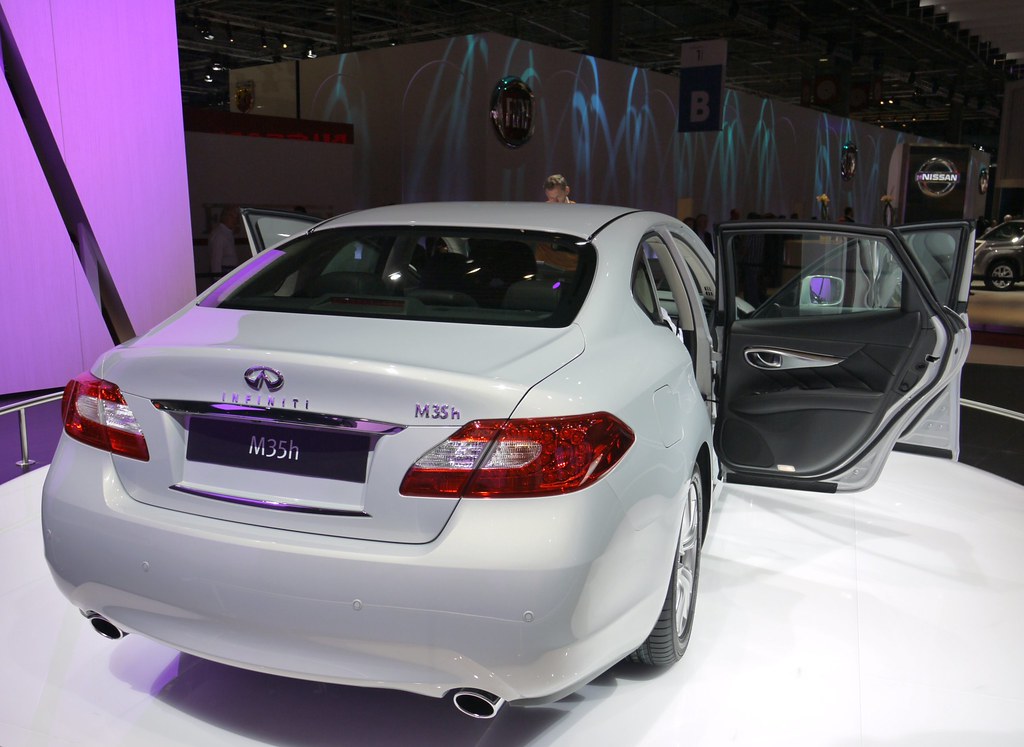
3. **The Silent Paradox: How Quiet Motors Induce Queasiness**Another defining characteristic of electric vehicles, their near-silent operation, paradoxically contributes to the very motion sickness it aims to avoid. While the absence of engine noise is often celebrated as a luxury and a hallmark of EV sophistication, it removes a critical auditory cue that our brains rely on to interpret motion and anticipate changes in speed.
Dr. Brynna Connor points out that because EVs are “so darn quiet, your ears aren’t registering what’s happening.” This lack of auditory input exacerbates the sensory disconnect that triggers motion sickness, as the brain doesn’t receive the expected aural confirmation of movement. Dr. D.J. Verret supports this, emphasizing that the absence of sound in an EV can significantly worsen the experience for passengers, especially those already prone to motion sickness, because the “auditory and visual inputs don’t fit the model that you are actually moving.”
This sensory deprivation is a profound shift from the traditional driving experience. In an internal combustion engine (ICE) vehicle, the rumble of the engine, the whine of acceleration, and the subtle vibrations all provide a constant stream of information to the brain, helping it to build an accurate model of the vehicle’s motion. Without these familiar cues, the brain struggles to reconcile the visual perception of movement with the lack of expected sound, leading to a feeling of disorientation and, ultimately, nausea. Matt Farah, host of “The Smoking Tire” podcast, corroborates this, stating that “the absence of sound” is a key factor in feeling dizzy when going fast in an EV.

4. **Instant Torque, Instant Disorientation: The Jolt of EV Acceleration**Electric vehicles are renowned for their instantaneous torque and rapid acceleration, a thrilling aspect that often outstrips their gasoline-powered counterparts. This ability to go “from zero to 60 very quickly” is a significant selling point, emphasizing power and performance. However, this same impressive characteristic can be a major contributor to motion sickness, particularly for those unaccustomed to such immediate power delivery.
Ed Kim explains that EVs have “so much torque – you tap the throttle and the thing just takes off.” This abruptness of power delivery, while exciting for drivers, can be “unsettling to some people” and can cause the car to “lurch and make some occupants car sick.” Dr. Brynna Connor adds that these extremely quick accelerations trigger “more jerking movements than those that occur when someone accelerates and then brakes in a regular vehicle,” creating a disconcerting experience for passengers.
For many Americans who learned to drive with gasoline engines, the sensation of an EV launching forward with minimal delay is profoundly disorienting. The subtle build-up of speed in an ICE vehicle, often accompanied by engine noise and gear shifts, allows the brain to prepare for and adjust to the acceleration. In an EV, the sheer force and suddenness can overwhelm the sensory system, leading to feelings of nausea and dizziness. Matt Farah personally attests to this, noting, “If I do two or three launches in a row in an EV, I don’t feel great after,” underscoring the physical impact of these rapid bursts of power.

5. **The Passenger’s Plight: Why the Back Seat is Worse**While drivers can experience motion sickness in EVs, passengers are demonstrably more susceptible to dizziness and nausea, with the back seat proving to be a particularly challenging location. This disparity highlights a crucial aspect of motion sickness: the role of anticipation and control in mitigating symptoms.
Dr. D.J. Verret explains that if you’re the driver, your head moves as you turn the wheel, and “our brain is responding to what it’s expecting to happen.” The driver is actively engaged in controlling the vehicle’s motion, allowing their brain to anticipate and prepare for changes in direction and speed. This predictive capability significantly reduces the sensory mismatch that triggers motion sickness. Conversely, as a passenger, “you can’t see those motions” of control, and thus, your brain is deprived of these critical anticipatory cues.
Dr. Brynna Connor further elaborates that passengers are more prone to getting sick because they may be focusing on stationary objects, such as a book or a screen, while their body is experiencing the car’s movements. This disconnect between what the eyes are fixed on and what the body is feeling intensifies the sensory conflict. John Voelcker’s experience of being “thrown around a little bit” in the back seat of a Tesla underscores the heightened vulnerability of rear-seat occupants, where visual reference points may be limited, and the feeling of being a passive recipient of motion is amplified.
6. **Digital Distraction: Screens and the Loss of External Cues**Modern vehicle interiors, especially in advanced EVs, are increasingly dominated by large digital screens. While these screens offer enhanced connectivity, entertainment, and control, they inadvertently contribute to the problem of motion sickness by drawing occupants’ attention away from the external environment, which provides vital visual cues for spatial orientation.
The growing presence of “ever larger and numerous screens inside vehicles” overburdens users with visual information, which in turn “discourages them from looking outside.” When passengers are engrossed in a screen, they lose their ability to take in the “correct” visual signals – namely, the external view of the vehicle and the horizon. These external cues are essential for the brain to correctly perceive its position in space and reconcile it with the sensations of motion.
This creates a problematic “sensory delay between your eyes, brain, and body,” as Dr. Brynna Connor explains. By focusing on a static or independently moving image on a screen while the vehicle itself is in motion, the brain receives conflicting signals, intensifying the feeling of disorientation. Furthermore, the psychological aspect plays a role; the mere knowledge one is likely to suffer nausea from screens can stress vulnerable passengers, with research suggesting that up to 40% of motion sickness symptoms can be linked to passenger psychology, making the digital cabin a double-edged sword for well-being.
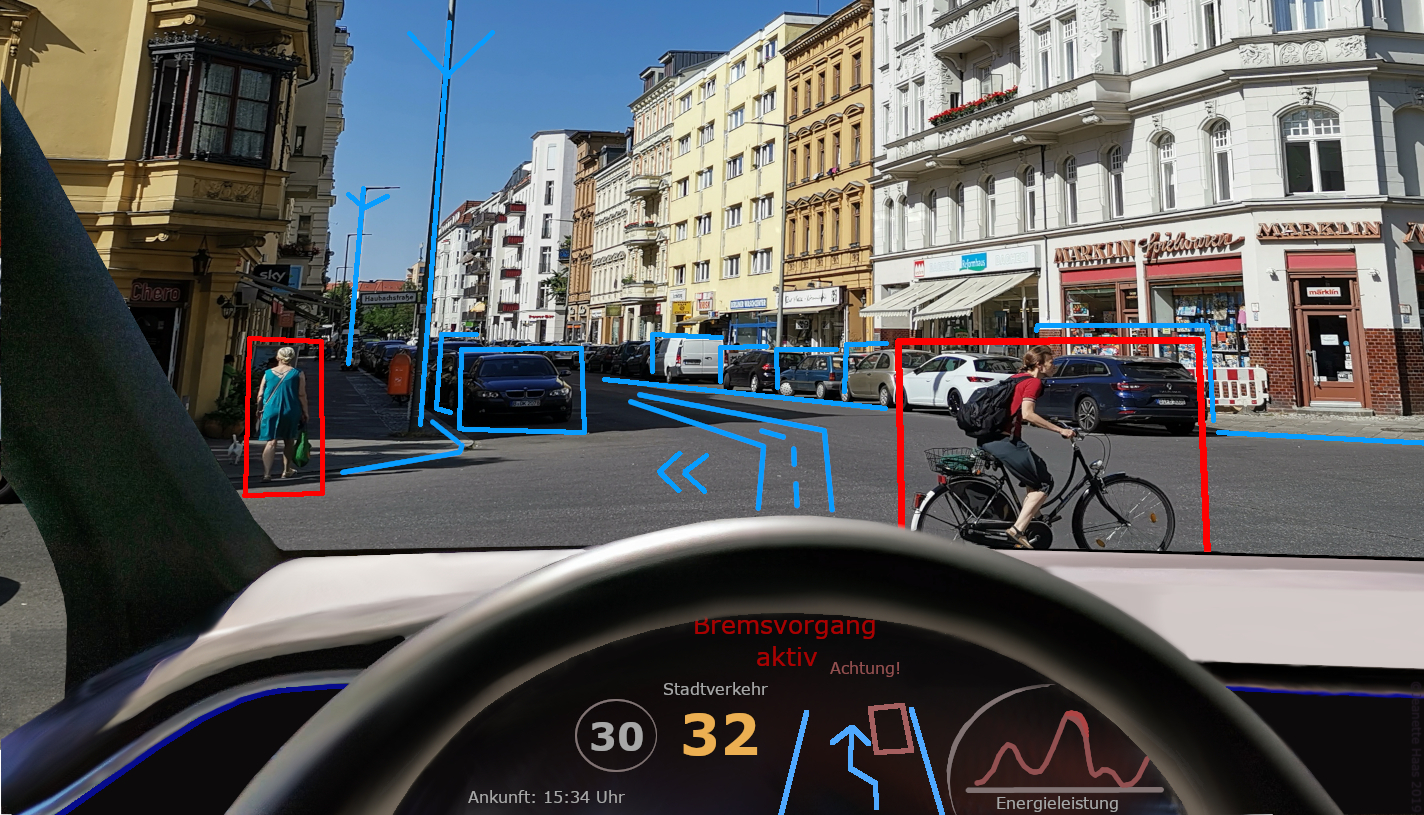
7. **The Future Factor: Autonomous Driving and Enhanced Sickness Risks**Looking ahead, the ongoing development and eventual widespread adoption of autonomous driving technology are poised to significantly exacerbate the challenge of motion sickness in vehicles. While partially automated vehicles are common today, the future promises fully self-piloting cars, which inherently remove the human element of active control, a key factor in mitigating nausea.
As previously discussed, the act of driving itself is the most effective way for an individual to anticipate trajectories and, consequently, curb motion sickness symptoms. When vehicles are fully autonomous, passengers become entirely passive observers, deprived of the critical ability to predict and influence the car’s movements. This fundamental shift away from active driving removes a vital cognitive mechanism that helps the brain maintain sensory equilibrium, creating a heightened risk for motion sickness.
Moreover, the disappearance of the traditional driving cockpit in autonomous vehicles will lead to redesigned interiors, transforming cars into “rolling living rooms.” These new configurations will offer passengers unprecedented freedom, allowing for novel seating arrangements, such as turning seats rearwards-facing to facilitate conversation. However, in the collective unconscious, “sitting with one’s back against the road is associated with the likeliness of becoming sick.” While research has shown that this orientation makes no physiological difference compared to forward-facing seats, this deeply ingrained psychological bias can still contribute to the onset of symptoms. Additionally, the promise of autonomous travel often involves passengers devoting “idle” time to productive tasks or entertainment, inevitably leading to increased engagement with digital devices and further reducing interaction with the external landscape, thereby amplifying the sensory mismatch problem even further.
Having dissected the perplexing reasons behind the rise of EV-induced motion sickness, our journey now turns to the crucial question: what can be done about it? The technological advances that brought us instantaneous torque and whisper-quiet rides also present unique challenges. Yet, innovation often begets further innovation, and the automotive industry, alongside health experts, is actively exploring a range of solutions and mitigation strategies. These span from empowering drivers with adaptive techniques and engineering smarter vehicle systems, to equipping passengers with personal remedies and redesigning future mobility for enhanced comfort. It’s a testament to human ingenuity that as we identify new problems, we also begin to uncover promising pathways to overcome them. Let’s dive into the solutions that are emerging to turn green gills into smooth sailing.

8. **Driver Adaptation: Mastering One-Pedal Driving and Eco Mode**One of the most immediate and impactful solutions lies within the driver’s control, particularly in mastering the unique dynamics of electric vehicles. As Monica Jones, an associate research scientist at the University of Michigan Transportation Research Institute, notes, “one-pedal driving is a very different experience than combustion engines,” underscoring the necessity of a learning curve. Strong regenerative braking, while undeniably efficient, “can cause motion sickness” if not modulated effectively, a discomfort John Voelcker, a former editor of Green Car Reports, vividly recalled from personal experiences as a passenger in Teslas.
To counteract this, experts emphasize a nuanced approach to the accelerator pedal. Jeremy Judkins, a content creator specializing in Teslas, advises treating the accelerator not as an on-off switch, but like a video game controller: easing off the pedal gradually and incrementally allows the car to slow down smoothly, a stark contrast to the abrupt lift-and-brake action common in traditional gasoline cars. This deliberate, finessed control is crucial for preventing the “jerky movement” that triggers nausea and an “abrupt seesaw motion for passengers.”
Beyond just modulation, drivers can also leverage existing vehicle settings to cultivate a more comfortable ride. Ed Kim, president and chief analyst of AutoPacific, recommends utilizing the eco mode in EVs, which typically makes the throttle less sensitive. This adjustment fosters a “more relaxed driving style,” directly counteracting the “jumpy” throttle tuning some automakers employ to emphasize power, which can otherwise cause the car to “lurch and make some occupants car sick.”
Ultimately, the issue often comes back to the person behind the wheel. Matt Farah, host of “The Smoking Tire” podcast, succinctly puts it: “You have more control over what the car is doing with the gears. You want to control what the car is doing — that is the point of driving.” This active engagement significantly reduces the “neural mismatch” that contributes to sickness. Voelcker points out that “a lot of motion sickness, honestly, is because of the driver,” emphasizing the potential for significant improvement through mindful driving. Even with a driver who has mastered one-pedal driving, “uncertainty in the environment — like traffic — can still cause motion sickness,” Jones adds, suggesting ongoing vigilance is key.

9. **Engineering Solutions: Artificial Sound and Gearing**While driver adaptation is crucial, automakers are also stepping up with innovative engineering solutions, some surprisingly counter-intuitive, to address the sensory vacuum of EVs. One notable approach involves reintroducing sensory cues that mimic the familiar experience of traditional internal combustion engine (ICE) vehicles, thereby bridging the “neural mismatch” gap for the brain.
A prime example of this is the Hyundai Ioniq 5 N. This chic hatch comes equipped with “fake gearing and artificial engine noises” — specifically N e-shift and N active sound+ technologies. Matt Farah, after test driving the Ioniq 5 N, stated he was “blown away” and that his “perspective on EVs has changed,” confirming that these features “successfully mimic what we like about gasoline sports cars” and make an EV “fun.”
Though these synthetic sounds and gear shifts aren’t explicitly designed to alleviate motion sickness, a Hyundai spokesperson acknowledged that “it is possible that these features might indirectly help reduce some of those effects for electric vehicle drivers.” Farah’s experience supports this, noting that with the gears, “you have more control over what the car is doing.” Even if the sound is known to be “fake,” it provides the necessary sensory feedback, allowing the driver’s brain to anticipate and interpret motion more accurately.
This innovative strategy directly counters the “silent paradox” that contributes to queasiness by restoring the auditory and tactile cues that our brains rely on to anticipate movement. By giving drivers a more familiar and responsive connection to the vehicle’s operation, it reduces the disorientation caused by the absence of expected sensory information, paving the way for a more intuitive and comfortable driving experience for many.

10. **Engineering Solutions: Refined Throttle Mapping and Smooth Drives**Another significant avenue for mitigating EV motion sickness lies in the meticulous tuning of vehicle dynamics, specifically focusing on throttle response and braking feel. Instead of relying on artificial sounds, some manufacturers are optimizing the fundamental driving experience to be inherently smoother and more aligned with passenger expectations.
Cadillac’s Lyriq, a sleek electric SUV, stands out as an exemplary model in this regard. John Voelcker describes its tuning and drive quality as “the closest approximation to an ICE car that I have seen in a while,” a sentiment echoed by Ed Kim, who notes that its “acceleration is more gentle” and that it “does not lurch forward unexpectedly like some of the other electric SUVs.” This translates to a “passenger experience [that] is more like a traditional gas car — no matter who drives it.”
Kevin Cansiani, a senior engineer at Cadillac, elaborates on the engineering philosophy behind the Lyriq’s premium drive quality. He highlights the absence of the “shifts and jerks you always get” with ICE transmissions, instead delivering a “feeling of seamless torque.” Cansiani’s team meticulously tuned the Lyriq, developing a “common set of throttle mapping” and using “specific drive scorecards” to take “objective measurements on jerk – that sting you feel,” ensuring that both passengers and drivers are unaffected by throttle response.
The Lyriq also offers drivers flexibility with three regenerative braking modes: off, normal, or high. Cansiani notes that the “normal mode” is favored by most customers for its “instant feel of negative torque.” Crucially, driving with regen off “won’t impact range a lot” because the Lyriq employs “blended braking,” meaning the brake pedal will still command as much regen as possible before transitioning to friction braking. This design allows occupants sensitive to strong regen to enjoy a smoother ride without significant compromise on efficiency.
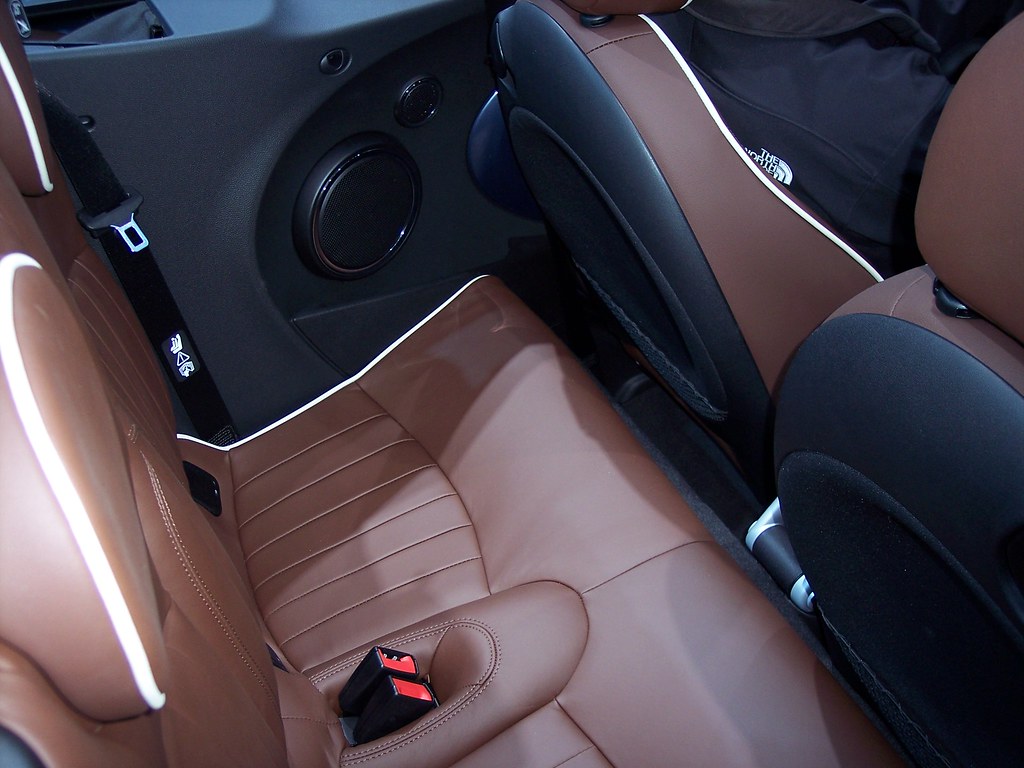
11. **Passenger Strategies: Seating, Visual Cues, and Hydration**While engineering and driver behavior play critical roles, passengers, who are demonstrably “more susceptible to dizziness and nausea in an EV than drivers,” especially in the back seat, also have agency in managing their comfort. This heightened vulnerability stems from their passive role, deprived of the anticipatory cues that drivers benefit from, as Dr. D.J. Verret explains.
Optimizing one’s position within the vehicle and visual focus can make a significant difference. Dr. Monya De, a physician in Los Angeles, advises individuals prone to motion sickness to “ask to be the driver or front seat passenger.” These positions typically offer a clearer, more encompassing view of the road, enabling the brain to better anticipate vehicle movements and reconcile sensory inputs, thereby mitigating the sensory mismatch.
Counteracting the allure of digital distraction, Dr. Brynna Connor, a board-certified family medicine physician, “recommends looking out the window, which helps minimize that sensory disconnect we talked about” earlier. Maintaining a steady gaze on the horizon provides essential visual stability, helping the brain align what the eyes see with the body’s sensations of motion. Furthermore, ensuring that the vehicle has good airflow through proper ventilation helps maintain comfort and reduce nausea, a practical step to alleviate symptoms.
Beyond environmental factors, physical well-being is paramount. Dr. Connor emphasizes proactive steps like staying adequately hydrated, as dehydration can “exacerbate symptoms like headaches,” making one more susceptible to motion sickness. She refers to general guidelines from Mount Sinai and Mayo Clinic, suggesting approximately 15.5 cups of fluids per day for men and 11.5 cups for women for ideal hydration.
Prioritizing rest is another crucial preventative measure. Dr. Connor highlights the impact of fatigue, explaining, “When your body and brain are fatigued, you’re going to have a lower threshold for motion sickness.” Ensuring a decent night’s rest before traveling in an EV can significantly fortify one’s resistance to the onset of motion sickness symptoms.
12. **Personal Remedies: Ginger, Light Meals, and Acupressure**In addition to adjusting driving styles and appreciating advanced vehicle engineering, individuals can deploy a personalized toolkit of natural and traditional remedies to either prevent or alleviate motion sickness. These accessible strategies empower occupants to take control of their comfort.
Dietary considerations offer a straightforward first line of defense. Dr. Monya De suggests that “sucking on ginger candy while in a Tesla could help alleviate your motion sickness symptoms,” a recommendation backed by research demonstrating ginger’s efficacy in reducing nausea and vomiting. Similarly, Dr. Brynna Connor advises “avoiding eating large meals” right before a trip, as a heavy stomach can contribute to nausea; opting for lighter fare is a wiser choice.
For those seeking a non-pharmacological approach, the ancient practice of acupressure presents a viable option. Dr. De introduces the P-6 pressure point, located on the inner arm near the wrist, as a target for nausea relief. As detailed by the Memorial Sloan Kettering Cancer Center, one can perform easy DIY acupressure on this point by pressing down with a thumb and moving it in circles for two to three minutes, which may help calm the stomach and alleviate discomfort.

13. **Medical and Immediate Relief: OTC Meds and Fresh Air**For those moments when preventative measures fall short or symptoms become acutely uncomfortable, readily available medical options and immediate environmental changes can offer crucial and rapid relief. Being prepared with these solutions can make a significant difference in passenger comfort during an EV journey.
Over-the-counter (OTC) medications are a well-established recourse for motion sickness. Dr. Brynna Connor explains that certain antihistamines “help dry out the inner ear, in turn helping alleviate motion sickness.” Additionally, for more severe or persistent symptoms, anti-nausea patches, such as scopolamine transdermal patches worn behind the ear, “help suppress the central nervous system’s reaction to the sudden movement and produce a calming effect on the stomach.”
Sometimes, the simplest intervention can be the most effective: fresh air. Dr. Connor advises that if motion sickness has already set in, the most direct approach is to “consider asking the driver if they can safely pull over so you can get some fresh air and walk around for a bit.” This brief respite from the vehicle’s motion and an intake of fresh air can significantly combat nausea and dizziness, providing both a physical and psychological break. While acknowledging this might not always be feasible in a rideshare scenario, it remains a vital option for personal or familial travel.

14. **Future-Proofing: Auditory Cues and Habituation**As the automotive landscape continues its rapid evolution, particularly towards autonomous electric vehicles, designers and researchers are looking beyond immediate fixes to future-proof the driving experience against motion sickness. The insights gained from current EV challenges are informing a new generation of design considerations.
One promising area of research focuses on reintroducing sensory information that the brain can process effectively. A study published in the International Journal of Human–Computer Interaction found that when “auditory motion cues” were used in conjunction with high levels of regenerative braking, motion sickness decreased. The study highlights the “importance of motion cues in EVs and provide insights into the design of RB systems and corresponding human-machine interaction strategies,” suggesting that strategic sound design could be integrated into future vehicles.
Beyond sound, researchers are exploring a broader palette of “visual and vibrational cues — interactive screens, ambient lighting, or haptic feedback — to help riders anticipate changes in motion.” As EV adoption accelerates and autonomous capabilities advance, these integrated sensory cues will be crucial in creating a harmonized experience, especially for passengers who are otherwise passive observers of the journey.
Ultimately, there’s also the human element of adaptation. William Emond, a PhD student studying car sickness, observes that “when discovering a new motion environment, the brain needs to habituate.” Dr. Connor adds that it can simply take “your brain and body time to get acclimated to these new types of unfamiliar movements.” Dr. Monya De offers a hopeful perspective, noting that for many EV riders, motion sickness “has dissipated as they’ve gotten more used to the movements of the car.” This suggests that with time and continued exposure, our physiological systems can learn to adjust to the unique sensory profiles of electric vehicles, offering a long-term path to comfort.
The journey toward a fully comfortable electric and eventually autonomous future is undeniably complex, fraught with unforeseen challenges like motion sickness. Yet, as we’ve explored, the ingenuity of human adaptation and technological innovation are already paving the way for significant improvements. From drivers mastering subtle throttle modulation to engineers meticulously crafting sensory feedback, and passengers adopting simple, effective remedies, the path to a harmonious relationship with our high-tech vehicles is becoming clearer. The discomforts of today are merely the catalysts for the smarter, more intuitive, and ultimately more enjoyable rides of tomorrow, ensuring that the promise of sustainable mobility doesn’t come at the cost of our well-being.

